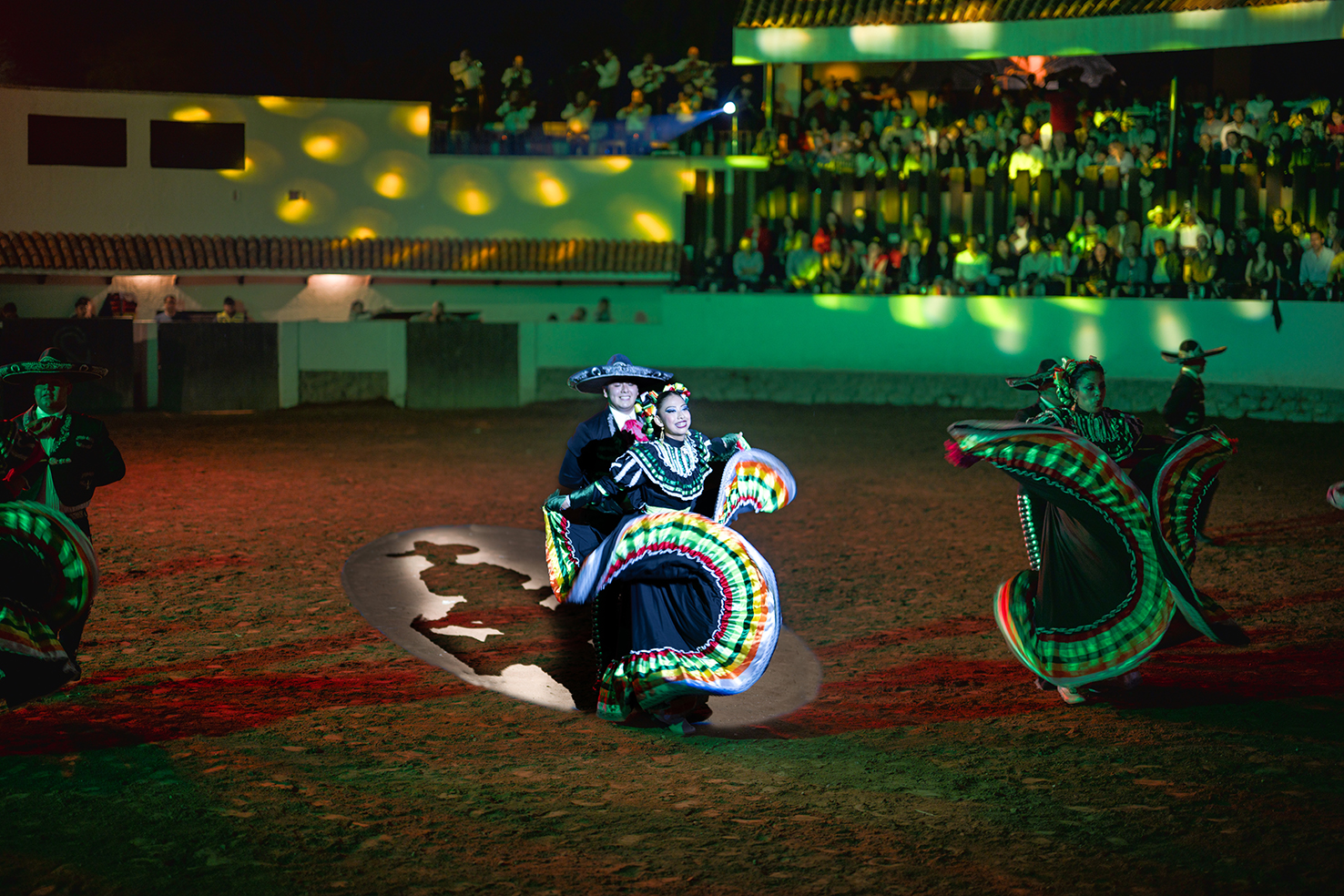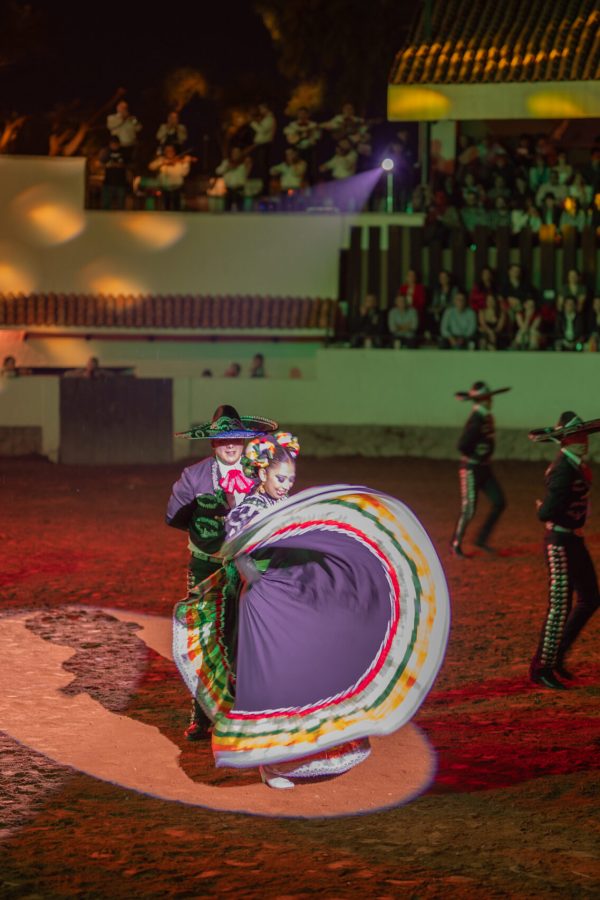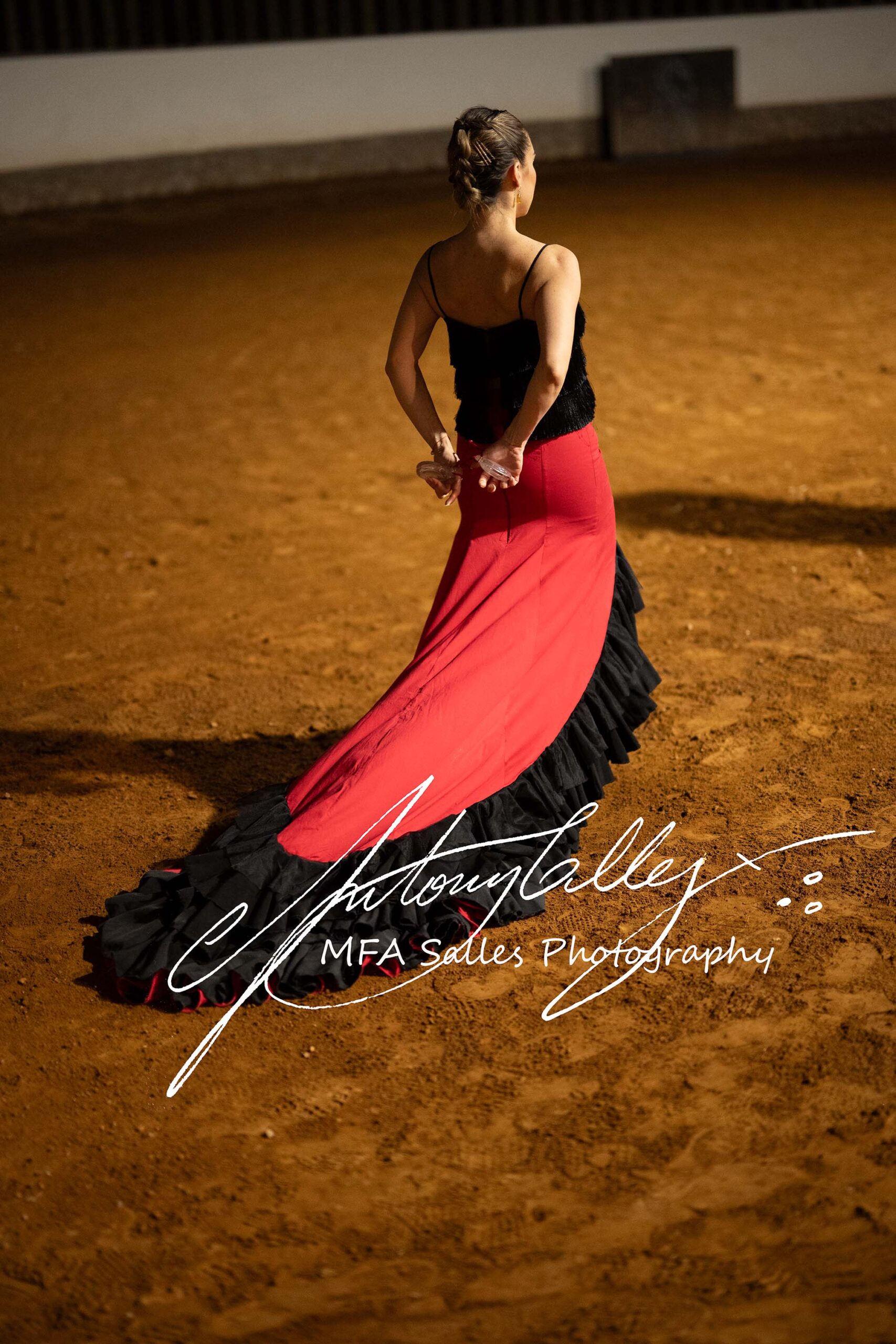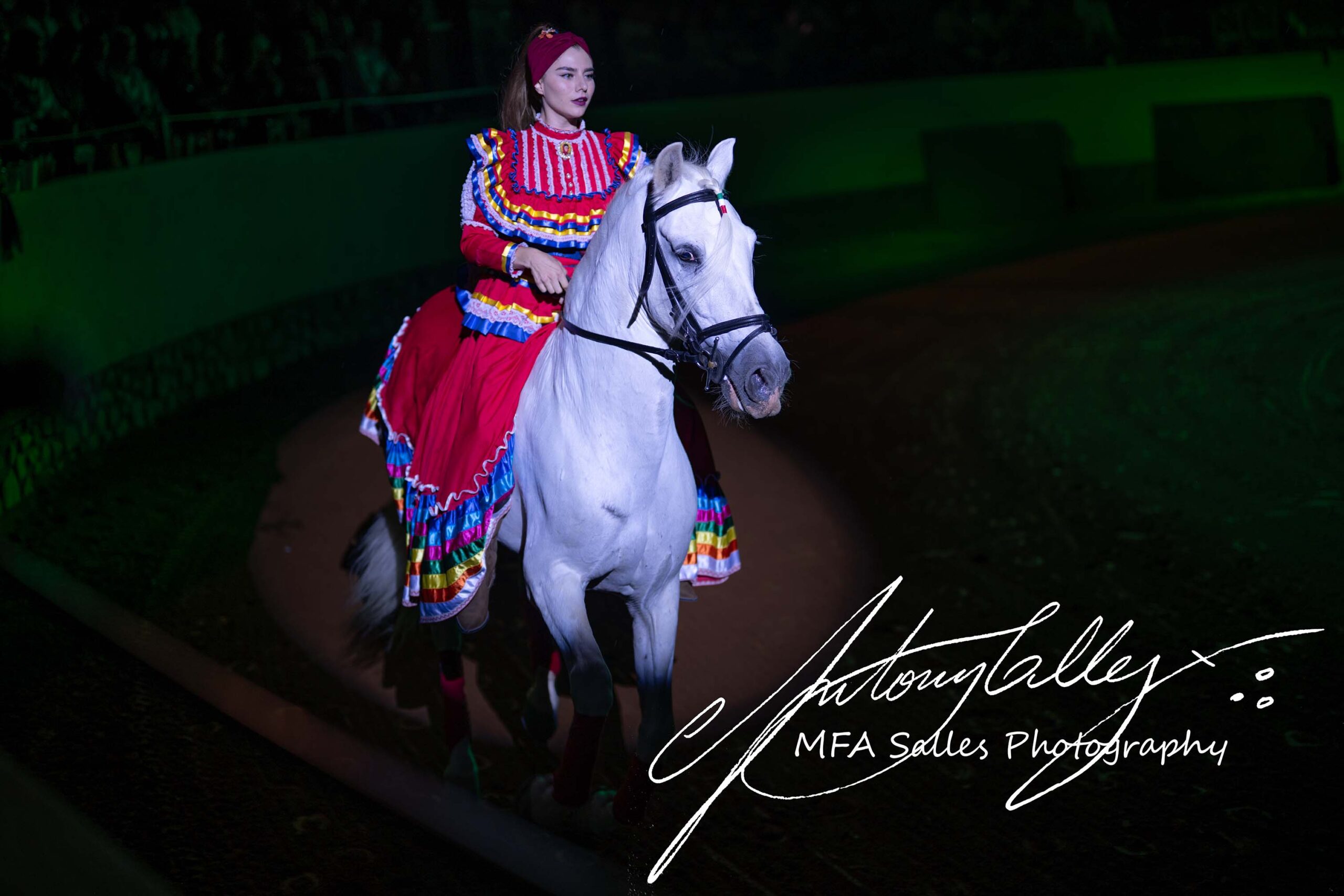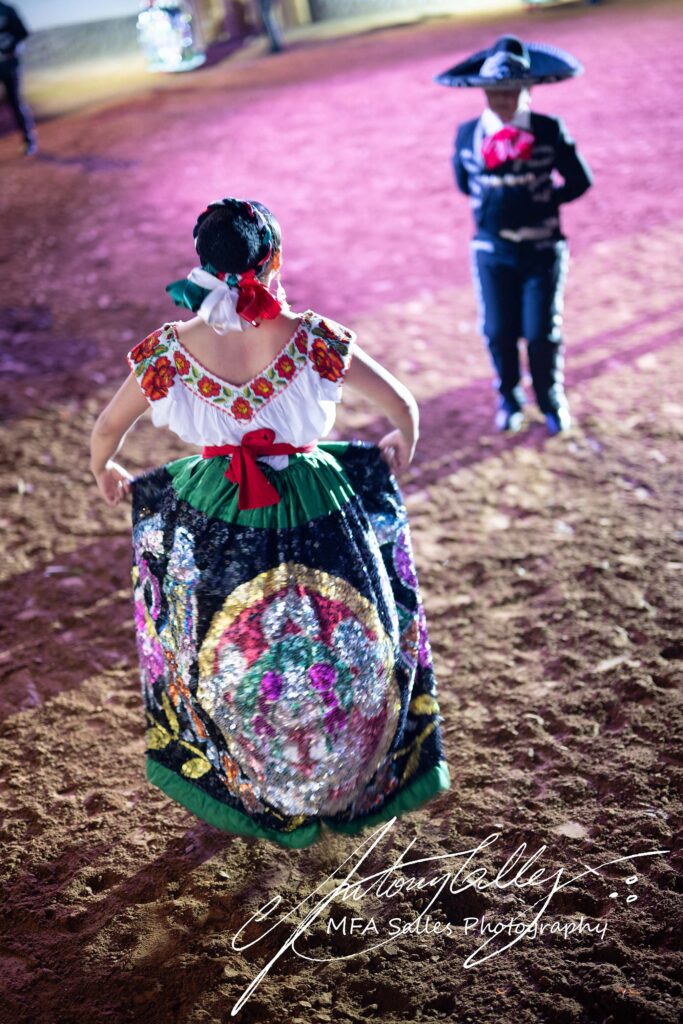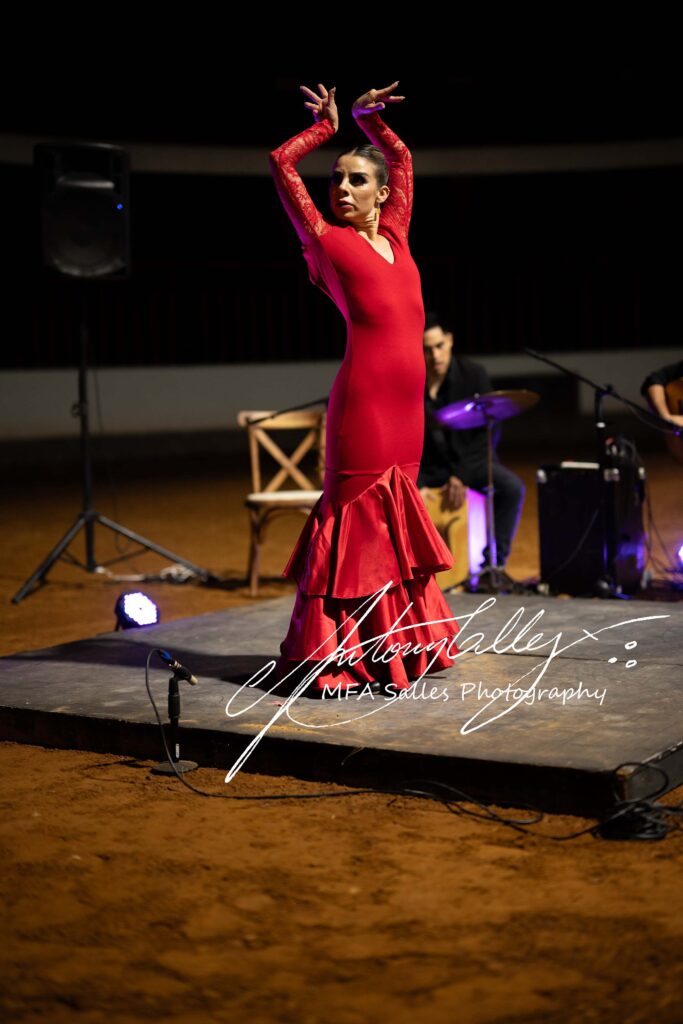There are several distinct regional types of Mexican folkloric dance, some of which feature horses in the show. One instance is the “Danza de los Caballos” from the state of Jalisco. Usually performed as a part of festivals or festivities, this dance involves dancers dressed like charros, or Mexican horsemen, who execute coordinated maneuvers while riding horses. The dancing reflects Mexico’s riding customs and emphasizes the close relationship between the rider and the horse.

